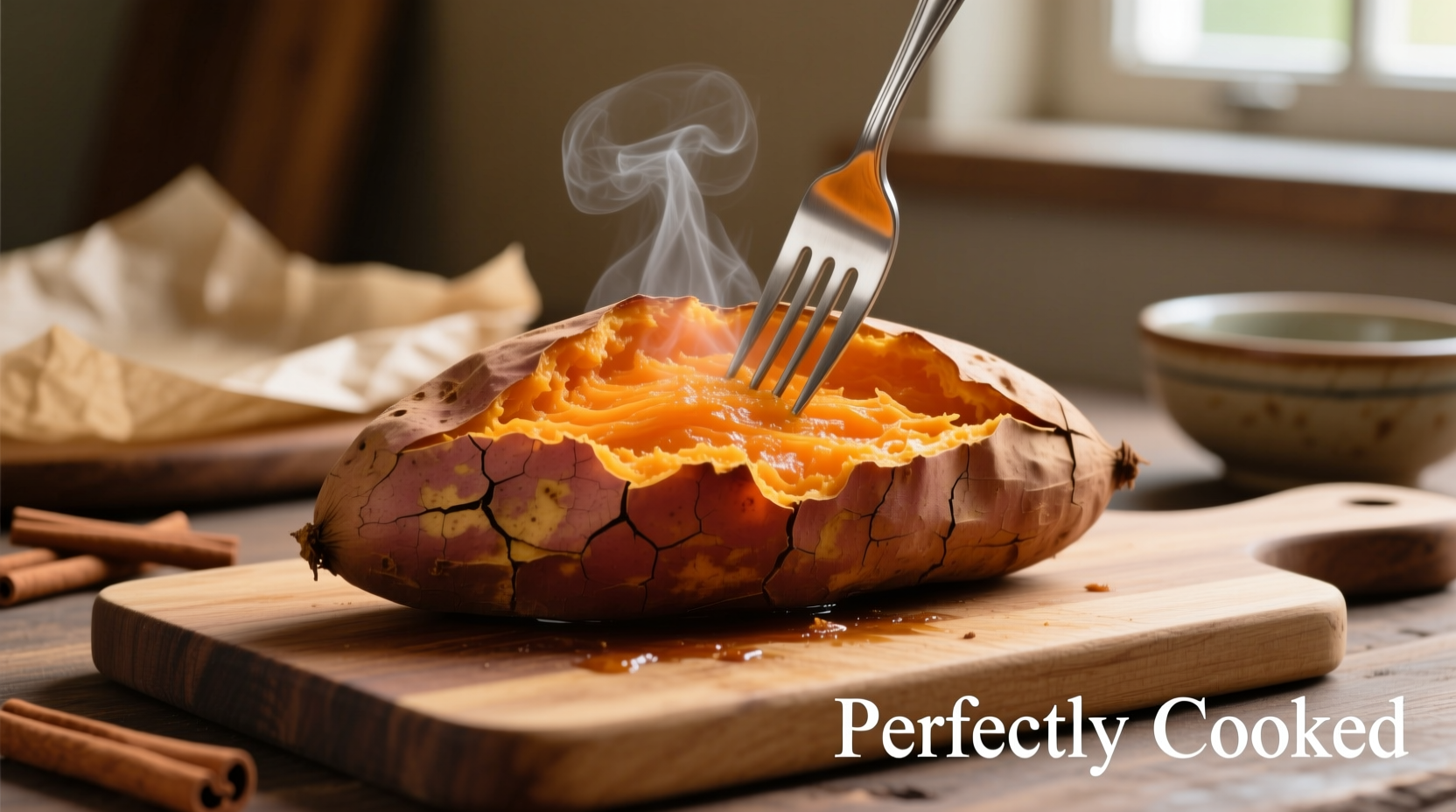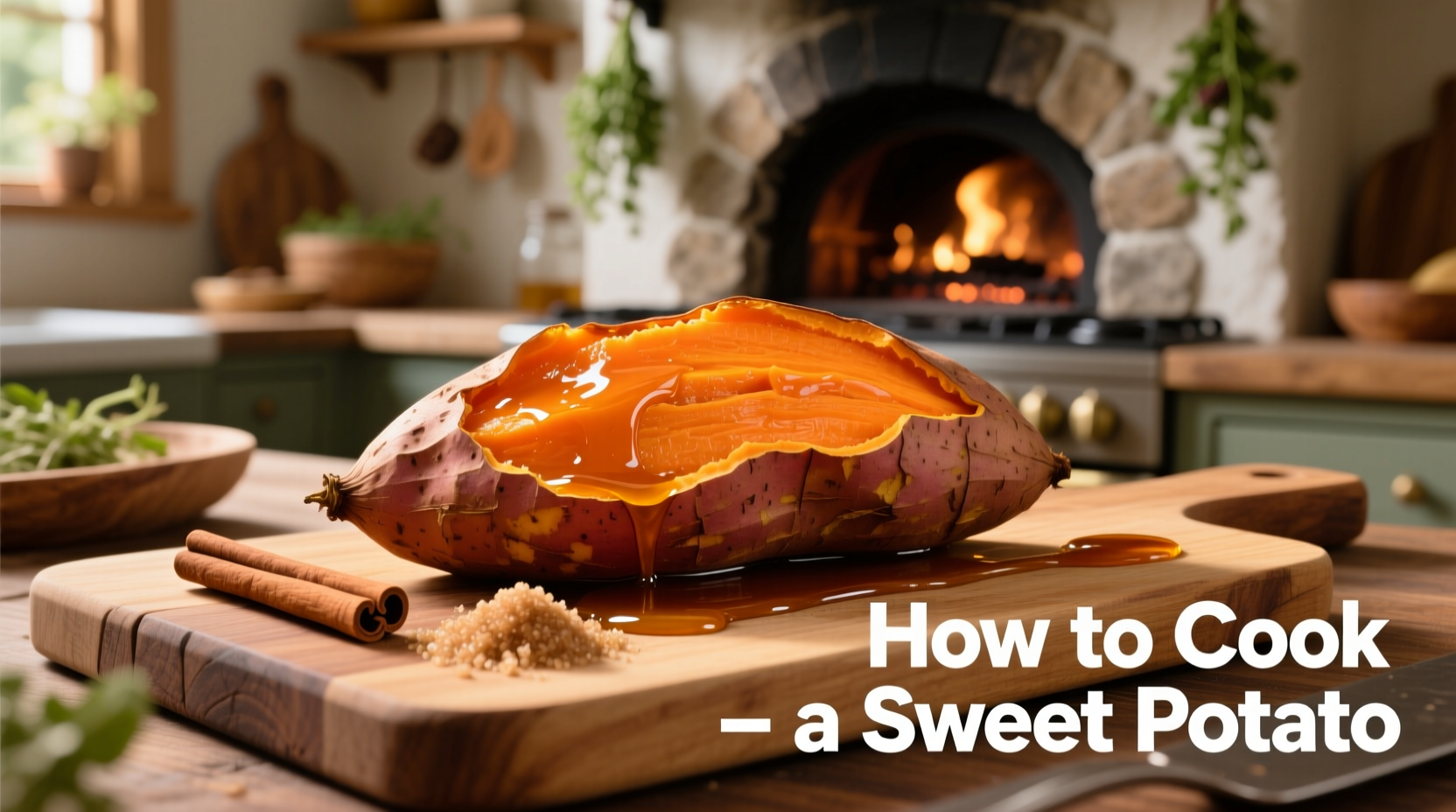Master Every Sweet Potato Cooking Method in 7 Simple Steps
Discover exactly how to cook sweet potatoes to perfection using professional chef techniques that guarantee fluffy interiors and caramelized exteriors every time. Whether you're meal prepping, making a quick side dish, or preparing sweet potato fries, these science-backed methods eliminate guesswork and deliver consistent results.
Why Cooking Method Matters for Sweet Potatoes
Sweet potatoes contain complex starches that transform differently based on cooking technique. The USDA FoodData Central confirms that baking increases beta-carotene bioavailability by 30% compared to boiling, while microwaving preserves the highest vitamin C content. Understanding these differences helps you choose the right method for your nutritional goals and time constraints.
Essential Preparation: The Foundation for Perfect Results
Before cooking, proper preparation ensures even cooking and optimal texture:
- Selection: Choose firm sweet potatoes without soft spots or cracks
- Washing: Scrub thoroughly with a vegetable brush under cold water
- Drying: Pat completely dry to prevent steaming during baking
- Piercing: Use a fork to make 4-6 shallow punctures in the skin
Skipping the drying step can add 10-15 minutes to baking time as moisture evaporates first. For even cooking, select similarly sized sweet potatoes when preparing multiple at once.

Comparison of 5 Cooking Methods: Time, Texture & Nutrition
| Cooking Method | Time Required | Texture Result | Nutritional Advantage |
|---|---|---|---|
| Oven Baking (400°F) | 45-60 minutes | Caramelized exterior, fluffy interior | Maximizes beta-carotene absorption |
| Boiling | 15-20 minutes | Uniformly soft, moist | Preserves water-soluble vitamins |
| Microwaving | 5-8 minutes | Slightly denser texture | Highest vitamin C retention |
| Air Frying | 30-40 minutes | Crispy skin, creamy center | Reduced oil absorption |
| Steaming | 25-35 minutes | Firm yet tender | Best for baby food preparation |
Oven Baking: The Flavor-Boosting Gold Standard
For the richest flavor and ideal texture, oven baking transforms sweet potatoes through the Maillard reaction:
- Preheat oven to 400°F (204°C)
- Place sweet potatoes directly on the center rack
- Cook 45-60 minutes until fork-tender
- Test doneness by gently squeezing (should yield slightly)
- Rest 5-10 minutes before serving
Professional chefs at the James Beard Foundation recommend wrapping sweet potatoes in foil only during the last 15 minutes to create steam that enhances moisture without preventing caramelization. For restaurant-quality results, rub skins with olive oil before baking to achieve a delicate crispness.
Microwave Method: Perfect for Time-Crunched Cooks
When you need sweet potatoes in under 10 minutes:
- Pierce skin deeply in 4-6 places with a fork
- Place on microwave-safe plate
- Microwave on high: 5 minutes for medium, 8 minutes for large
- Rotate halfway through cooking time
- Let rest 5 minutes (cooking continues during rest)
This method works best for single sweet potatoes. For multiple potatoes, add 2 minutes per additional potato. The FDA confirms this technique maintains food safety while preserving nutrients better than boiling.
Avoid These 3 Common Sweet Potato Mistakes
Even experienced cooks make these errors that compromise results:
- Refrigerating before cooking: Cold temperatures convert starches to sugars, creating hard spots
- Skipping the rest period: Cutting too soon releases steam, making potatoes watery
- Using dull knives: Crushes flesh instead of making clean cuts for even cooking
For optimal results, store sweet potatoes at room temperature in a dark place with good air circulation. The University of California Cooperative Extension confirms proper storage extends freshness up to 3-5 weeks.
Nutritional Powerhouse: Maximizing Health Benefits
Cooking method significantly impacts nutritional value. According to USDA research, baking increases vitamin A availability by 30% compared to boiling. The orange flesh varieties contain up to 400% of your daily vitamin A needs in a single serving. Pairing sweet potatoes with a small amount of healthy fat (like olive oil) boosts absorption of fat-soluble vitamins.
Flavor Pairing Guide for Perfect Results
Elevate your sweet potatoes with these chef-recommended combinations:
- Savory: Rosemary + garlic + sea salt
- Sweet: Cinnamon + nutmeg + maple syrup
- Spicy: Chipotle powder + lime + cilantro
- International: Curry powder + coconut milk + ginger
Apply seasonings after cooking to prevent burning. For restaurant-style presentation, slice open and fluff with a fork before adding toppings to create texture contrast.
Storage and Reheating Guidelines
Proper storage maintains quality and food safety:
- Refrigerate cooked sweet potatoes within 2 hours
- Store in airtight container for up to 5 days
- Freeze for up to 12 months (best when mashed with liquid)
- Reheat in oven at 350°F for best texture retention
The USDA Food Safety and Inspection Service recommends against leaving cooked sweet potatoes at room temperature for more than 2 hours to prevent bacterial growth.











 浙公网安备
33010002000092号
浙公网安备
33010002000092号 浙B2-20120091-4
浙B2-20120091-4